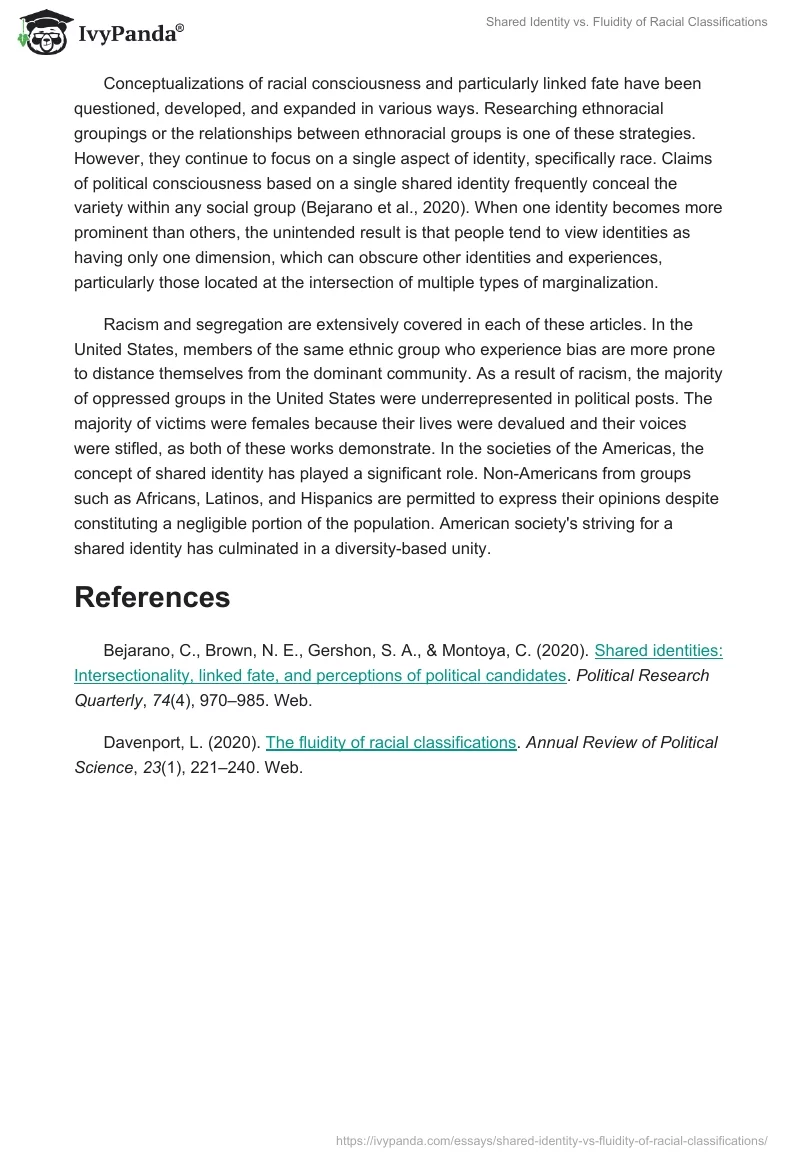Racial fluidity refers to the belief that one’s race is not static and unchanging but somewhat fluid and subject to change. Throughout a lifetime, an individual’s perception of their own and other people’s identification of their race and their self-identification can shift in reaction to various factors, including social circumstances. In this article, the literature study on racial fluidity, which is the concept that one’s race may be fluid and change over time.
Tracing the ongoing development of racial classifications and boundaries in the United States of America and Latin America, two regions that share a history of European colonization, slavery, and high racial mixing but have espoused very different racial ideologies throughout history. These two regions share a history of European colonization, slavery, and high levels of racial mixing (Davenport, 2020). In the past, groups in the United States had the traditional belief that one’s race was fixed and was defined by their lineage.
On the other hand, several regions of Latin America have historically lacked strong classification standards and have supported racial mixing. However, a recent study discovered that race in the United States could alter through time and environment, particularly for socially equivocal groups (Davenport, 2020). In contrast to the trend in Latin America, where certain racial boundaries are becoming more set, knowledge of racial identities has been reinterpreted due to race fluidity (Davenport, 2020). It offers a variety of alternatives for future work in political science that integrates multiple disciplinary and methodological approaches.
Studies conducted on African Americans gave rise to the concept of linked fate, which contends that African Americans have maintained a powerful sense of shared identity and familiar struggle. This is due to the colonial experience of slavery and disempowerment in the United States (Bejarano et al., 2020). This sense of identity and struggle is powerful enough to shape political behavior and to continue to be influential despite the widespread socioeconomic diversity within that society.
Conceptualizations of racial consciousness and particularly linked fate have been questioned, developed, and expanded in various ways. Researching ethnoracial groupings or the relationships between ethnoracial groups is one of these strategies. However, they continue to focus on a single aspect of identity, specifically race. Claims of political consciousness based on a single shared identity frequently conceal the variety within any social group (Bejarano et al., 2020). When one identity becomes more prominent than others, the unintended result is that people tend to view identities as having only one dimension, which can obscure other identities and experiences, particularly those located at the intersection of multiple types of marginalization.
Racism and segregation are extensively covered in each of these articles. In the United States, members of the same ethnic group who experience bias are more prone to distance themselves from the dominant community. As a result of racism, the majority of oppressed groups in the United States were underrepresented in political posts. The majority of victims were females because their lives were devalued and their voices were stifled, as both of these works demonstrate. In the societies of the Americas, the concept of shared identity has played a significant role. Non-Americans from groups such as Africans, Latinos, and Hispanics are permitted to express their opinions despite constituting a negligible portion of the population. American society’s striving for a shared identity has culminated in a diversity-based unity.
References
Bejarano, C., Brown, N. E., Gershon, S. A., & Montoya, C. (2020). Shared identities: Intersectionality, linked fate, and perceptions of political candidates. Political Research Quarterly, 74(4), 970–985. Web.
Davenport, L. (2020). The fluidity of racial classifications. Annual Review of Political Science, 23(1), 221–240. Web.


